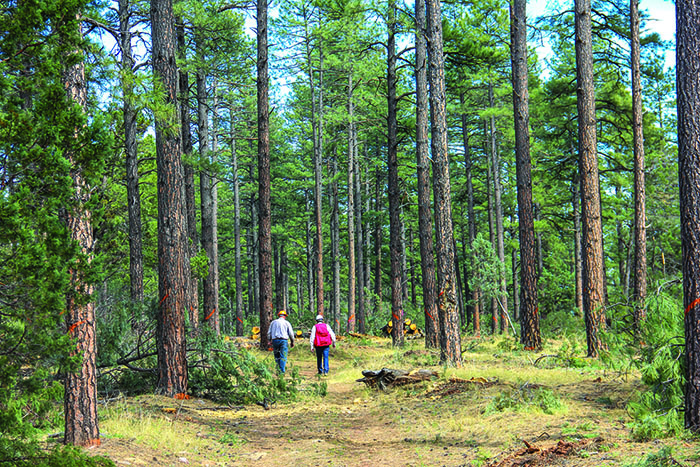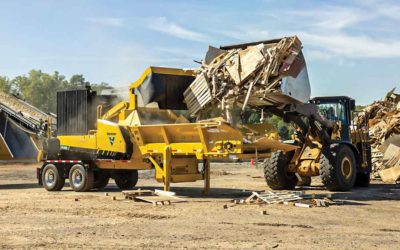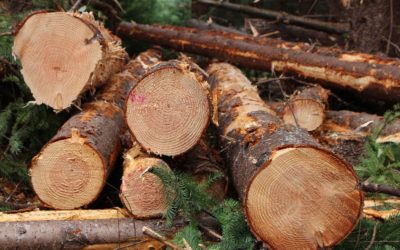TRUE CARBON KEEPERS OFFER REAL SOLUTIONS
Article by Dan Shell, Managing Editor, Timber Harvesting March/April 2020
Looking back at the time spent in Oregon for the Oregon Logging Conference (OLC) and several other stories, sunny weather was a great complement to the event, which is many times held under adverse weather conditions. Crowds thronged the exhibits both indoors and out as loggers view-ed the latest in logging machinery and technology and learned about everything from new and better ways of operating to regulatory and political issues surrounding the forest products industry.
While I was in Oregon the Timber Unity grassroots group rallied at the state Capitol in Salem to protest disastrous proposed cap-and-trade legislation to reduce greenhouse gas emissions by setting up a complicated and expensive system of credits for reducing emissions that must be purchased if reductions can’t be met. What it amounts to is a tax that falls primarily on the transportation sector and adds costs that will certainly be passed along to consumers and other businesses (like most all of them) that rely on products, supplies and inventory shipped via truck.
While in Oregon I saw a newspaper article where the writer had picked up on the OLC’s theme this year—“Work-ing Forests: Carbon Keepers”—to note that Oregon’s forest products industry was claiming to offer a solution to the emissions issue through thriving forests that capture carbon and sequester it in solid wood products while offering economic benefits as well.

On the other hand the writer cited research from Oregon State saying older, unmanaged forests do a better job of sequestering carbon. Though I confess to not seeing a copy of the study, quotes from a researcher involved implied that the study assumed most of the carbon from a clear-cut, for example, is released. Once again, this broad assumption underpins much of the opposition to using biomass-based energy when much of the assumption couldn’t be further from the truth.
Basically, any material harvested from a given tract that’s not burned or left on the ground is sequestered. This includes all the fiber used for solid wood products and paper, and by weight that’s a much bigger percentage than what’s going into a boiler or fuel pellet. Happily, even the lumber from old bulldozed frame houses headed to the landfill continues to sequester carbon. Bill Strauss at FutureMetrics in Maine is the go-to guy for this topic, and he’s made presentations around the world showing what a proper accounting of carbon sequestration looks like. If only the writer in Oregon had talked to him.
Here’s the research I’d like to see: Imagine a 100 acre tract of timber on parking lot level ground, stocked at a consistent rate with the same species, divided into two 50 acre units. One unit grows and harvests timber on three 30+ plus year rotations, the other unit is unmanaged.
Keep an accounting of what was grown and harvested and sequestered on the managed unit over 100 years, versus the volume of sequestration on the unmanaged side. I only know enough to be dangerous, but I’m betting the managed 50 acres through three 30 year rotations sequesters a higher volume of carbon over 100 years than the unmanaged 50.
One irony of Oregon’s cap and trade proposal is the state is essentially going alone, willing to put itself through economic pain for dubious benefits that really don’t amount to much in the overall scheme of things. The state has a small population and is really not much of a polluter.
A much bigger impact and true move toward sustainability can be made with a national renewable portfolio program and incentives to expand renewable energy utilization across the nation, at all levels of the energy supply chain. That’s where the true Carbon Keepers—America’s loggers and forestry professionals—can truly shine.
Biomass and forest residuals have a major role to play in reducing carbon-based emissions and extending or replacing coal-fired electricity production. What makes it an energy source unlike other renewables is its baseload capability:
Biomass is the only energy source that can make the lights come on when the sun isn’t shining and the wind isn’t blowing. Yes, it’s true that more biomass than coal must be burned to produce the same BTUs, but it’s also true that no one has ever seen and never will see a coal seedling or grow a ton of coal in 20-30 years.
Biomass utilization is not only truly sustainable but also provides forest health benefits beyond the pure carbon accounting through thinning programs that restore forest health and balance. Unmanaged forests going up in wildfire smoke are serious sources of negative carbon sequestration, and research has shown thinned areas less susceptible to major wildfire damage.
The cap-and-traders may have good intentions, but they need to step aside here and support the true carbon keepers: America’s working forests.
Latest News
Ponsse Appoints Samuel Vidgren Area Manager For The U.S.
Samuel Vidgren has started working as the Area Manager responsible for Ponsse’s dealer network in the U.S. on February 1. Vidgren’s task will be to strongly support and develop Ponsse’s dealer network in the U.S., so that Ponsse can offer the best customer experience in the industry to its customers now and in the future…
Vermeer Redesigns HG4000 Grinder
Vermeer has redesigned the Vermeer HG4000 horizontal grinder; this new generation delivers powerful performance in various wood waste recycling applications and landscaping material production. It’s equipped with a 536 HP (399.7-kW) CAT C13B T4F/Stage V diesel engine, a Series III duplex drum, an aggressive infeed…
Oregon Creates Research Forest
After seeking to sell the Elliott State Forest previously, Oregon’s State Land Board recently voted to convert the 80,000 acre tract into a research forest, de-coupling it from the state’s school funding system. The coast forest isn’t a large timber producer for the state’s Common School Fund, and…
WANT MORE CONTENT?
Spanning seven decades since its inception in 1952, Timber Harvesting highlights innovative and successful logging operations across the U.S. and around the world. Timber Harvesting also emphasizes new technology and provides the best marketing vehicle for the industry’s suppliers to reach the largest number of loggers in North America and beyond.
Call Us: 800.669.5613



